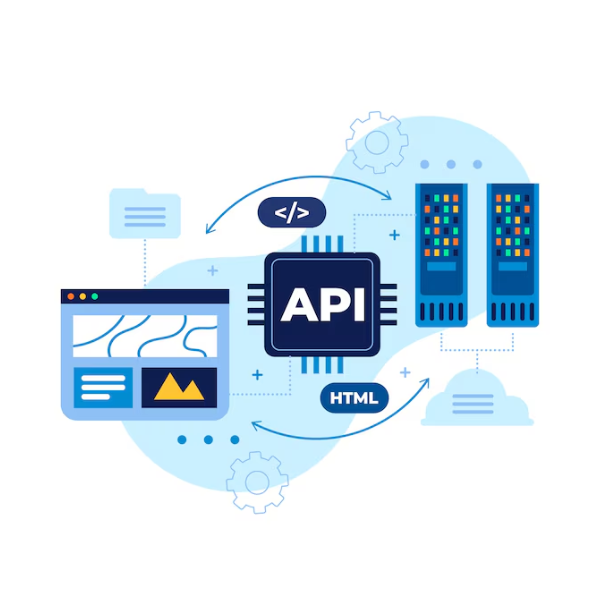Working on growing a business online feels like navigating a busy marketplace. Opportunities are everywhere. Yet, one might manage content issues, traffic spikes, or engagement glitches along the way. For Epistic, companies with advanced digital solutions, Strapi is at the very heart of developing corporate websites that grow with the business. This blog will make clear how Epistic uses Strapi, this flexible headless CMS, to build websites that scale effortlessly, perform reliably, and drive business. Readers’ll be walked through clear, actionable steps for implementing Strapi toward their own business growth.
What Makes Strapi Special for Epistic?
Strapi is basically a Node.js and TypeScript based open-source headless CMS. Unlike WordPress or similar platforms, the architecture separates the backend – where the content lives – from the front end – the confused user. This allows Epistic the freedom of creating adaptive custom websites suited to changing needs without being attached to rigid systems.
For businesses aiming for scalability, building a Strapi corporate website provides flexibility and future-proof architecture. For Epistic, Strapi is an obvious choice in being developer-friendly, API-driven, and built to be scalable. Small blogs need it just the same as multinational corporations for expanding businesses. Moreover, being open source means that Epistic can patch it for any specific purpose, say for absorbing content workflow efficiencies or for integration with other tools.
Why Strapi Works for Corporate Websites
- Customizable: Shape content structures and APIs to match business needs.
- Scalable: Handle growing traffic and content without breaking a sweat.
- API-Driven: Connect seamlessly with any frontend or third-party service.
- Easy to Use: Non-technical teams can manage content with a simple interface.
- Secure: Role-based permissions keep sensitive data protected.
These strengths make Strapi a powerful ally for Epistic’s mission to build websites that grow with the business.
Why Online Scaling is a Big Deal
Scaling a business online isn’t just about getting bigger—it’s about staying efficient while reaching more people. A website that can’t handle traffic spikes, load quickly, or adapt to new markets will hold a business back. For Epistic, scaling online means:
- Welcoming more visitors without crashes or slowdowns.
- Offering content in multiple languages for global customers.
- Automating tasks to free up time for strategy.
- Creating personalised experiences to keep users coming back.
A Strapi-powered website gives Epistic the tools to make this happen, providing a foundation that’s both flexible and robust.
Step 1: Lay the Groundwork for a Scalable Website
Scaling starts with a clear plan. Before jumping into Strapi, Epistic takes time to map out the business’s goals, audience, and technical needs. Here’s how to get started:
Set Clear Goals
What’s the website supposed to do? For Epistic, it might be:
- Generating more leads through forms and calls-to-action.
- Showcasing services to a worldwide audience.
- Making content updates quick and easy for teams.
- Connecting with tools like CRMs or analytics platforms.
Having specific goals shapes the website’s design and functionality.
Know the Audience
Who’s visiting the site? Are they local customers or international clients? Do they expect fast load times or specific features like multilingual support? Epistic studies its audience to ensure the website delivers what they need. For instance, global users might want content in their native language, which Strapi supports through its localization features.
Evaluate Technical Needs
A scalable website needs the right tech foundation. Epistic considers:
- Traffic Volume: Will the site handle hundreds or millions of visitors?
- Content Scale: How many pages, posts, or products will it manage?
- Integrations: Does it need to work with tools like HubSpot or Stripe?
- Speed: Can it load quickly even under heavy traffic?
Strapi’s headless setup lets Epistic pair it with modern frontend frameworks (like React or Next.js) and hosting platforms (like AWS or Vercel) to meet these demands.
Step 2: Get Strapi Up and Running
With a plan in place, it’s time to set up Strapi. The process is straightforward, and Epistic follows these steps to create a scalable backend.
Install Strapi
Strapi can run locally or in the cloud. For scalability, Epistic opts for cloud hosting. Here’s how to set it up:
- Ensure Node.js and npm are installed on the server.
- Run npx create-strapi-app@latest epistic-website –quickstart to start a new project.
- Pick a database like PostgreSQL or MySQL for better performance than SQLite.
- Launch the Strapi admin panel and set up an admin account.
This creates a clean Strapi instance ready for customization.
Build Content Types
Content types define how data is organized. For Epistic’s corporate website, typical content types include:
- Pages: For static content like “About” or “Contact.”
- Blog Posts: For articles that boost SEO and engagement.
- Team Profiles: To highlight staff expertise.
- Client Testimonials: To build trust with visitors.
Using Strapi’s Content Type Builder, Epistic creates these types with fields like titles, images, and SEO metadata. The interface is intuitive, even for non-developers.
Set Up Roles and Permissions
Epistic uses Strapi’s role-based access control (RBAC) to manage who can do what. For example:
- Admins have full control over content and settings.
- Editors can write and publish blog posts.
- Marketing Teams can view analytics but not change code.
This keeps the site secure and workflows smooth as the team grows.
Step 3: Craft a High-Performance Frontend
Strapi handles the backend, but the frontend is where users interact. Epistic pairs Strapi with frameworks like Next.js or React to create fast, responsive websites.
Pick the Right Framework
Next.js is a favorite for Epistic because it offers:
- Server-Side Rendering (SSR): Improves load times and SEO.
- Static Site Generation (SSG): Makes static pages lightning-fast.
- API Routes: Simplifies connecting to Strapi’s APIs.
For example, Epistic might build a homepage that pulls data from Strapi’s REST or GraphQL APIs using Next.js.
Boost Performance
To handle growing traffic, Epistic focuses on speed:
- Edge Delivery: Hosting on platforms like Vercel or Netlify serves content from servers near users.
- Image Optimization: Strapi’s media library, paired with Next.js’s image tools, shrinks image sizes.
- Caching: Storing frequently accessed data reduces API calls.
These steps keep the website fast, even during traffic surges.
Step 4: Connect with Business Tools
A corporate website needs to work with other systems. Strapi’s API-first design makes integrations simple. Epistic often connects with:
- CRMs: HubSpot or Salesforce to track leads.
- Analytics: Google Analytics to monitor user behavior.
- Email Tools: Mailchimp for newsletters.
- Payments: Stripe or PayPal for eCommerce.
For instance, Epistic might link Strapi to HubSpot to automatically send form submissions to the CRM, saving time and ensuring no lead slips through.
Step 5: Create Content That Scales
Content drives engagement, and Epistic uses Strapi to build a content strategy that grows with the business.
Produce Engaging Content
Great content keeps visitors interested. Epistic focuses on:
- Blog Posts: Articles on industry topics to improve SEO.
- Case Studies: Stories of client wins to build credibility.
- Landing Pages: Targeted pages for campaigns or promotions.
Strapi’s admin panel lets non-technical teams update content easily, freeing up developers for bigger tasks.
Offer Multilingual Support
To reach global markets, Epistic uses Strapi’s localization plugin to deliver content in multiple languages. This makes the website accessible to diverse audiences without extra effort.
Automate Content Workflows
As content grows, manual updates slow things down. Epistic automates with Strapi plugins:
- Scheduling: Publish posts at set times.
- Approvals: Require editor sign-off before content goes live.
- Versioning: Track changes for easy rollbacks.
These tools keep content creation efficient as the business expands.
Step 6: Handle Traffic Growth
Traffic spikes can overwhelm a website. Epistic uses Strapi’s headless design to ensure stability.
Scale Horizontally
Strapi supports horizontal scaling, so Epistic can add servers as traffic grows. For example:
- Deploy Strapi on AWS with auto-scaling for sudden surges.
- Use a load balancer to spread traffic across servers.
This keeps the site online during peak moments, like product launches.
Optimize the Database
A fast database is key. Epistic uses PostgreSQL and optimizes it by:
- Indexing fields for quicker API responses.
- Archiving old content to reduce database strain.
- Using connection pooling for multiple requests.
Use a CDN
Epistic pairs Strapi with a CDN like Cloudflare to speed up content delivery. CDNs cache static assets (like images and CSS) on global servers, cutting load times for users worldwide.
Step 7: Focus on User Experience
A scalable website isn’t just about tech—it’s about happy users. Epistic uses Strapi to create engaging experiences.
Personalize Content
Strapi’s APIs let Epistic tailor content to users. For example:
- Show product suggestions based on browsing history.
- Display region-specific content for different markets.
This boosts engagement and conversions.
Ensure Mobile Friendliness
With mobile traffic growing, Epistic builds responsive frontends using frameworks like Tailwind CSS. Strapi’s flexibility makes it easy to adapt designs for any device.
Speed Up Load Times
Slow sites lose users. Epistic optimizes by:
- Compressing images and videos in Strapi’s media library.
- Using lazy loading for non-essential content.
- Writing efficient API queries to minimize calls.
Step 8: Keep the Website Running Smoothly
Scaling requires ongoing care. Epistic monitors and maintains the Strapi website to ensure it performs well.
Monitor Performance
Epistic tracks metrics with tools like Google Analytics and Strapi’s analytics:
- Page load speeds.
- User engagement data.
- Traffic patterns.
This helps spot issues and find ways to improve.
Stay Updated
Strapi’s community releases regular updates. Epistic keeps up with:
- Security patches to stay safe.
- New plugins for added features.
- Performance tweaks for speed.
Back Up Data
To avoid losing data, Epistic sets up:
- Regular database backups.
- Content versioning for easy recovery.
- Disaster recovery plans to restore the site fast.
Step 9: Tap into Strapi Plugins
Strapi’s plugin ecosystem helps Epistic add features without custom code. Popular plugins include:
- SEO: Add meta tags and sitemaps for better search rankings.
- GraphQL: Enable faster, more flexible API queries.
- Sentry: Track errors and performance in real-time.
These plugins save time and keep the website adaptable.
Step 10: Plan for the Future
As Epistic grows, the website must keep up. Strapi’s flexibility makes it easy to adopt new trends, like:
- AI Tools: Add chatbots or personalized recommendations.
- eCommerce: Integrate with Shopify or Stripe for online sales.
- Microservices: Split the site into smaller, independent pieces for better scaling.
This ensures the website stays a valuable asset for years to come.
How Epistic Succeeded with Strapi
Epistic’s experience shows Strapi’s power. The old website struggled with slow speeds and manual updates. After switching to Strapi:
- Traffic Grew 10X: Scaling and CDNs handled surges smoothly.
- Content Updates Sped Up: Marketing teams published blogs in minutes.
- Global Reach Expanded: Multilingual support attracted new clients.
- Costs Dropped: Open-source Strapi cut licensing fees.
The website became a key driver of Epistic’s growth.
Overcoming Common Hurdles
Scaling has challenges, but Strapi helps Epistic tackle them:
- Hurdle: Slow APIs during traffic spikes.
Fix: Use caching and optimize database queries. - Hurdle: Complex workflows for big teams.
Fix: Lean on Strapi’s RBAC and versioning tools. - Hurdle: Connecting to old systems.
Fix: Use Strapi’s APIs for seamless integrations.
Planning ahead keeps these issues from slowing growth.
Tips to Start with Strapi
Ready to build a Strapi website? Here’s how Epistic suggests getting started:
- Begin Small: Test Strapi with a simple blog or landing page.
- Train Teams: Show marketing staff how to use the admin panel.
- Partner with Pros: Work with a Strapi expert like Epistic for complex builds.
- Stay Informed: Follow Strapi’s blog and community for tips and updates.
Why Epistic Bets on Strapi
Strapi for Epistic is much more than just a CMS; it is a growth engine. Flexible, scalable, and easy to use, Strapi is used to build websites that grow with the business. Through a combination of Strapi with modern frontends, smart integrations, and a unique focus on the user, Epistic produces websites that get results.
Scaling online does not need to be hard. Strapi-assisted by Epistic produces fast, flexible, and growth-ready websites. Whether it is handling increased visitors, entering new markets, or making content more efficient, Strapi does it all. Epistic and Strapi are clearly the winning recipe for an online boost.Are you ready to go forward? Contact Epistic to find out how Strapi can transform a corporate website into a scalable powerhouse.






